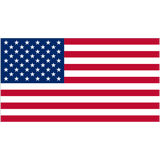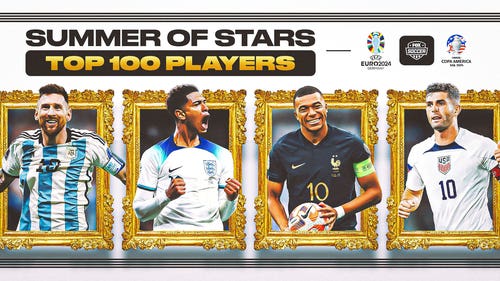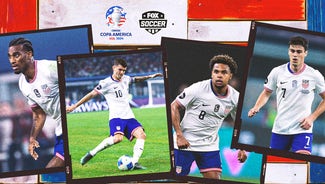
Should Bruce Arena have the USMNT playing with one or two strikers?
The second Bruce Arena era of the United States national team opened on Sunday, and it was difficult to take away too much from the game because of the limited player pool available. But one thing was obvious: Arena likes idea of a lone-striker system.
The advantage of the system is clear – by having a single striker, the Americans can have more numbers in the midfield to control possession. That includes having a dedicated No. 10 who can dictate the tempo of the game and provide the creativity Arena has said the team needs, while having other midfield help to shore up defensive vulnerabilities.
Arena deployed the USMNT in a 4-2-3-1 or a 4-1-4-1 against Serbia, depending how you look at it, and it's a formation that in a lot of ways suits the USMNT's personnel:
• Michael Bradley gets to sit deeper and play a more defensive role, where he is his most effective.
• Sacha Kljestan, who led MLS in assists last season, gets to do what he does best and pull the strings in the attack. A player like Benny Feilhaber or even Christian Pulisic could also provide good service in that role, too.
• Jermaine Jones, or even Sebastian Lletget, get to roam around and wreak havoc while having central midfield cover in front of them and behind. Lletget is brand new to the role on the USMNT, but he impressed on Sunday, much in the same way Jones has been indispensable over the years there.
• Fullbacks can push forward and overlap on the wings. Even as there are questions about who will be the starting fullbacks, typically the USMNT has very attacking-minded fullbacks who have the speed, stamina and ability to bomb up the field.
But what's less obvious is how the formation fits with the USMNT's would be goal-scorers.
All indications are that Altidore will be the USMNT's starting striker going forward but it's not clear he can make the dynamic runs needed to be as productive as Arena is hoping.
That's not to say Altidore isn't a good enough striker – he is probably the best option for the USMNT right now. Altidore has been in great form since his late-season surge last year, which carried Toronto FC all the way to the MLS Cup final, and he's the USMNT's most in-form player. But he plays alongside Sebastian Giovinco in Toronto, and his best USMNT performances recently came in a partnership with striker Bobby Wood.

In other words, Altidore is best in a two-striker formation, whether it's a 3-5-2, a 4-4-2 or similar – and he himself was up front about that after Sunday's match.
"It was good to see the ball in the second half a little bit, because the first half was a bit quiet," Altidore told Goal after Sunday's match. "That’s what it is in this formation — you’re lonely a lot at times."
"I think it’s no secret – for me, I’m better with kind of a partner up there," he added. "I’m not a huge fan of a 4-3-3. It’s difficult. You need really dynamic guys to be able to play it. We’ll see how it goes."
That may mean Kljestan or the No. 10 needs to push up a little further and build some more chemistry with Altidore. Arena will almost certainly be looking at the chemistry between the No. 10 and his striker and their ability to combine as he thinks about his roster for World Cup qualifying in March.
But the USMNT will also need more help from the wings in the formation Arena used on Sunday. Though the right-footed Darlington Nagbe did well cutting inside from the left, the communication between him and Altidore was off on Sunday. If they can get more of a partnership going, Nagbe could be a key to making the lone striker formation work with Altidore.
Yet the Americans will need some of that from the other flank too, and the defensive Alejandro Bedoya didn't offer enough going forward from the right wing. Pulisic will probably be the better solution for Arena to try at the next opportunity, but Arena has other attacking options he'll need to consider in the depth chart. Gyasi Zardes, Fabian Johnson and even perhaps Jordan Morris may be able to cut inside and combine with Altidore from the wing while the fullbacks push forward and overlap.
Or it could be that the USMNT should consider swapping Altidore for Wood as the lone striker. It's possible that Wood is his best in a pair as well – like we saw of him and Clint Dempsey at the Copa America Centenario – but he's comfortable and capable of being up top alone. Altidore is perhaps more physical, better at hold-up play and a stronger finisher, but Wood makes the explosive, dynamic runs that can stretch back lines and create openings for his teammates to feed him the ball – the runs a lone striker must make.
However, even if the USMNT does give Wood the striker job (since there aren't any better options behind Altidore and Wood at the moment), the issues with service from the No. 10 and the flanks remain the same. The lone-striker system will depend a lot on what the playmaker and wingers can do, regardless of who is up top.
Arena and the USMNT are still figuring things out, to be sure, and these are questions Arena has surely been working on finding answers to throughout the January camp. But what is clear is that Altidore spent much of Sunday on an island, disjointed from the midfield. He registered just one shot until he came out in the 74th minute and looked starved for good service.
The 4-2-3-1 or 4-1-4-1 may indeed be the best way forward – it puts the USMNT's midfield players in their best spots and Arena has to look at the roster as a whole. But if the USMNT uses it again against Jamaica on Friday (7 p.m. ET on FS1), the striker, playmaker and wingers will need to be on the same page.








































































































































